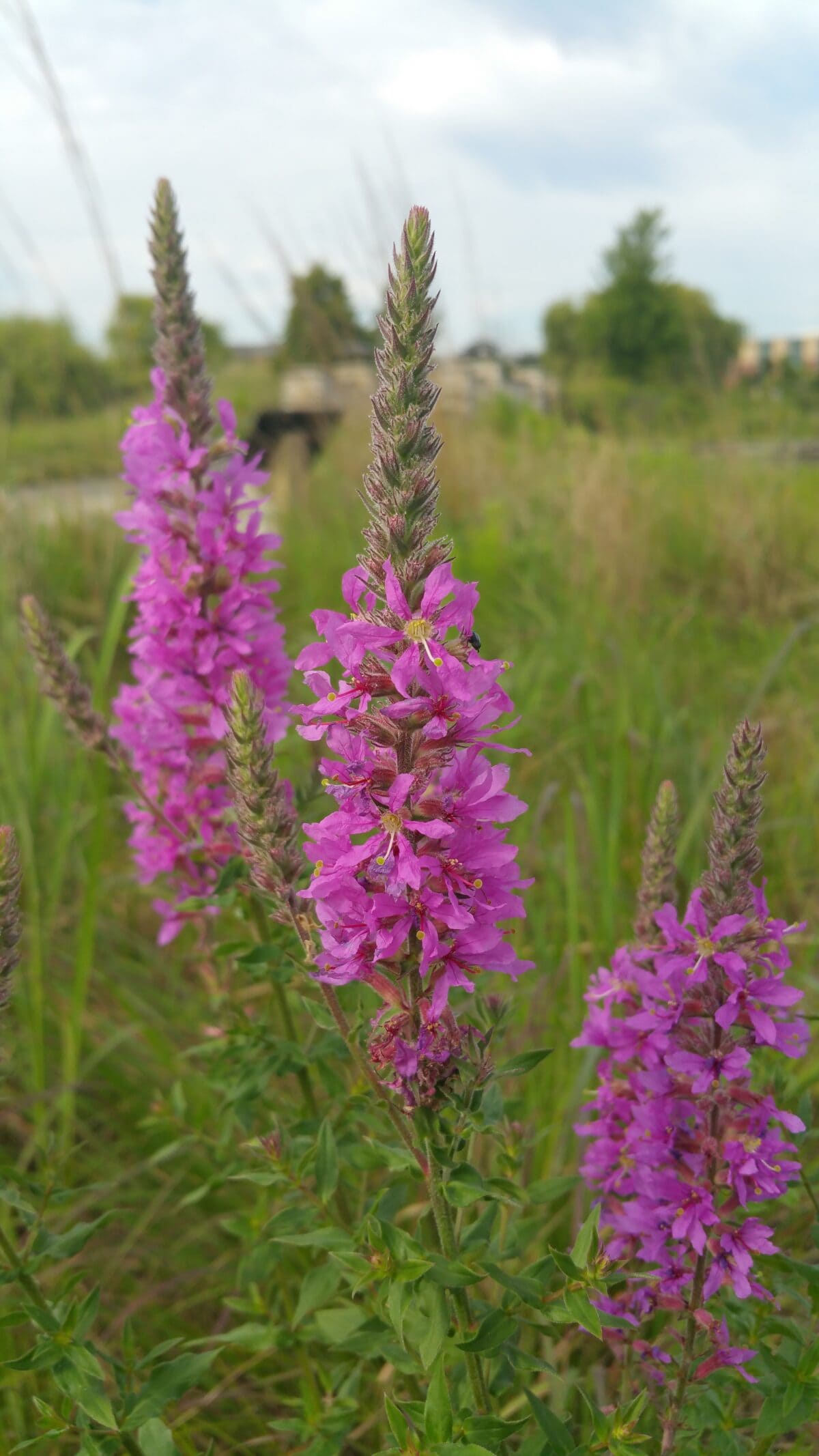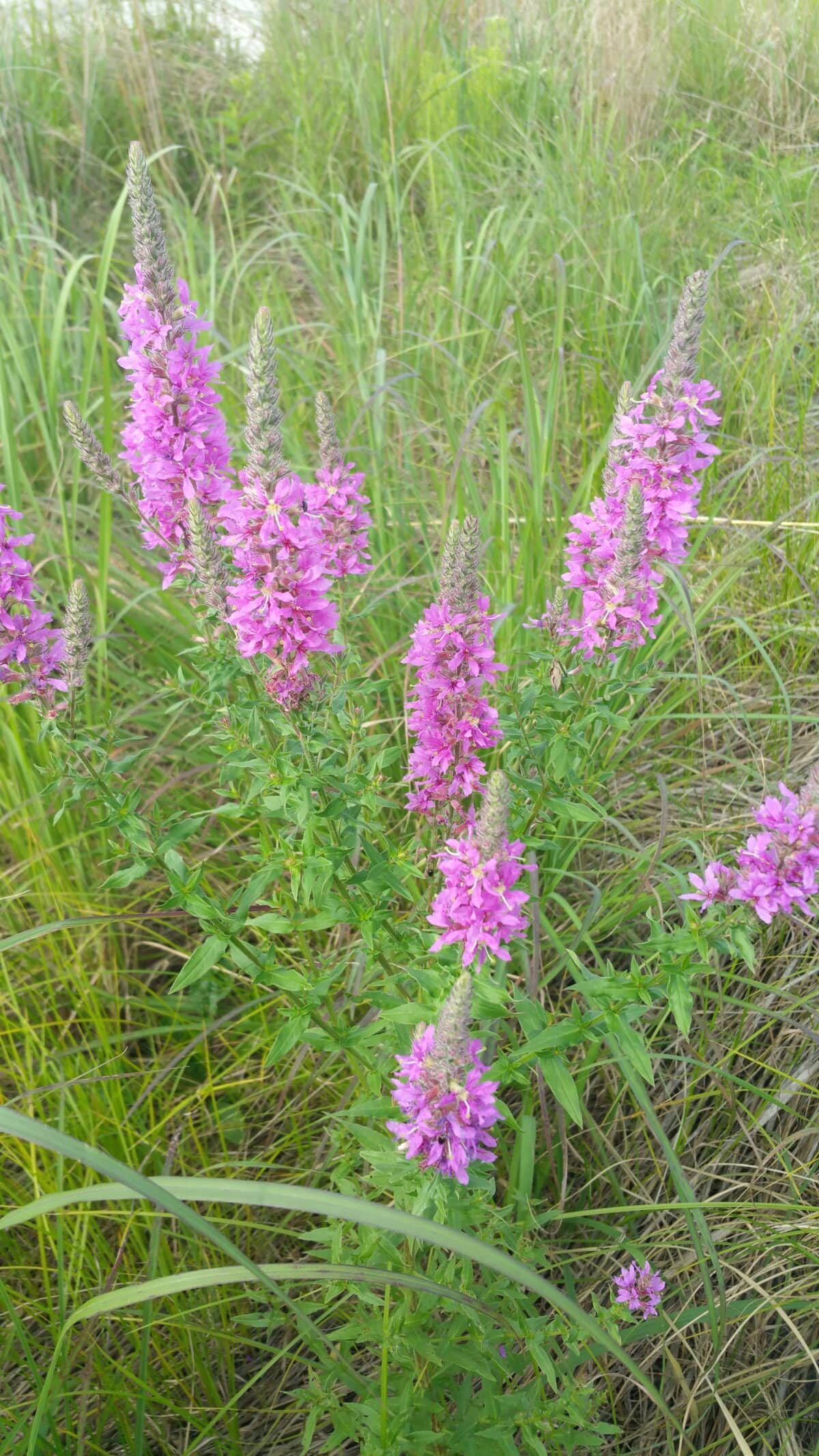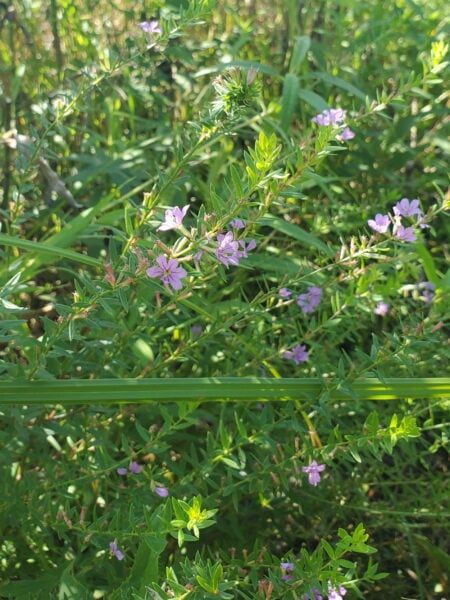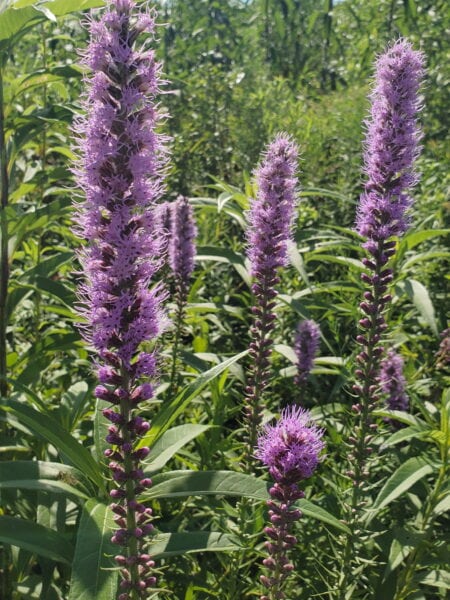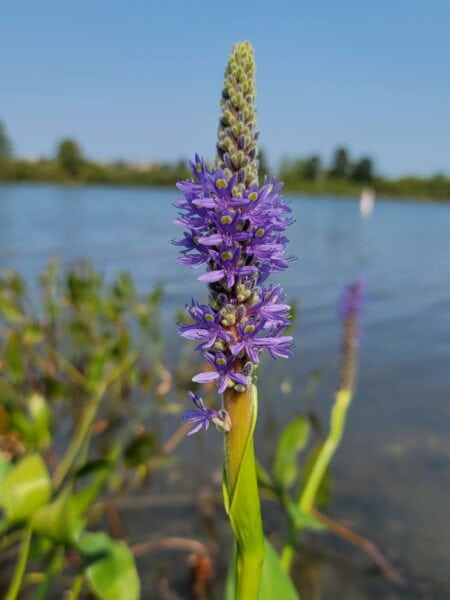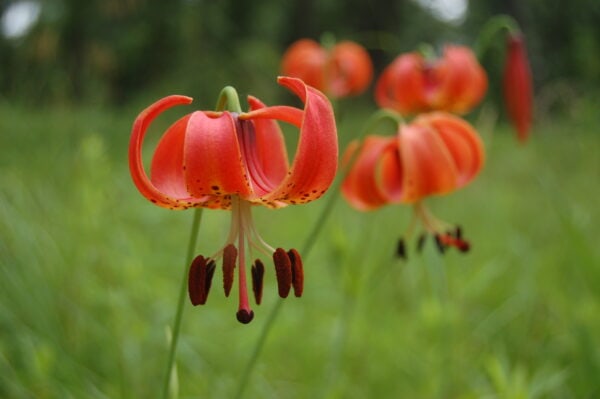
Megan Sprovach
Tallgrass Restoration, Crew Leader
When we are working in a natural area, people will frequently ask our crews what we are doing, and why, and having a beautiful purple flower that was once sold at garden centers being removed or treated with herbicide will bring up a lot of questions. A weed is simply a plant out of place, so while purple loosestrife may appear to be a perfect purple and bring joy to those who see it, it does not have a place in Midwest wetlands, natural areas, or your backyard, because of the havoc it wreaks.
What is Purple Loosestrife?
Purple loosestrife is a perennial plant that grows aggressively in habitats with sufficient moisture. It has a square stem and lance-shaped leaves. The stems can be hairy when younger, but turns woody and hairless as it ages, especially near the bottom. The top of the plant produces spikes covered in vivid pink or purple flowers with mostly 6 petals. A loosestrife plant can be either straight or bushy depending on how well-established it is.
Where Did it Come From?
Purple loosestrife was likely brought to the United States from Europe as an ornamental with attractive flowers, although it may also have been introduced from contaminated soil used as ship ballast. It readily escapes gardens and takes over wetland habitats and pond edges, displacing native species as it does. The resulting change in species can obstruct waterways and make wetlands less suitable as waterfowl habitat.
What is its Life Cycle?
A big reason why purple loosestrife is so invasive is its prolific seed production. Once it starts flowering in late June, it continuously does so throughout the summer. Each flower produces many tiny seeds that can either float on the waterways or be blown away – a single purple loosestrife can produce upwards of 1,000,000 seeds over one growing season! While purple loosestrife can also spread through rhizomes, it is spread far more via seeds.
How Can You Control it?
There are a few different methods of control: Since the 1990’s several species of beetle have been introduced to the United States to help control this invasive plant’s spread. Some species prevent purple loosestrife from flowering by eating the leaves and stressing out the plant. Others lay eggs in the flower buds or roots, and the hatched larvae consume the plant from the inside. So far, these beetles have proved to be effective at limiting the spread of purple loosestrife but they are not enough to eradicate purple loosestrife entirely so frequently multiple methods are paired together.
Smaller, less established plants can be pulled, especially if they’re growing in loose soils. Removing as much of the root system as possible will help prevent resprouting.
In larger populations, chemical applications may be necessary. Using herbicide on purple loosestrife requires caution because it is mainly found in aquatic habitats. Make sure that you know your local environmental protection laws, only use herbicide formulations that are safe to apply in wetland situations, and always read and follow the label.
What Can You Plant Instead?
Winged loosestrife (Lythrum alatum) is a native species that is similar in appearance to purple loosestrife, although it is shorter, with smaller leaves and flowers. Marsh blazingstar (Liatris spicata) grows in wetter habitats and has dense spikes of pink flowers. If you have a good amount of standing water, pickerelweed (Pontederia cordata) is an excellent aquatic plant that also has spikes of purple flowers.For more information on purple loosestrife:

